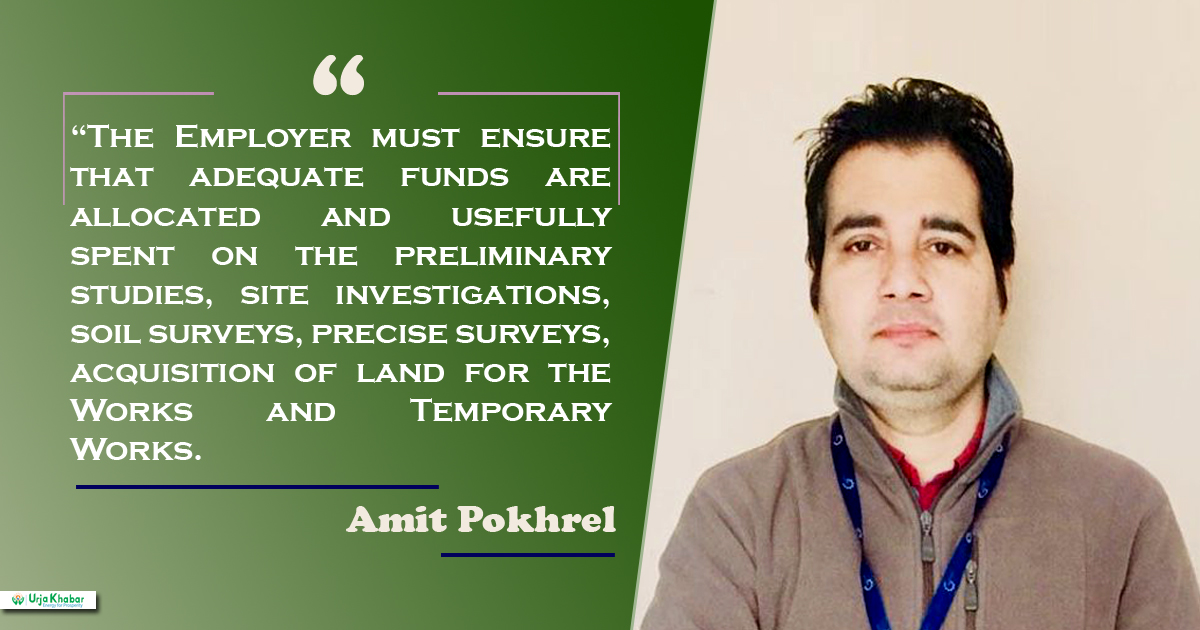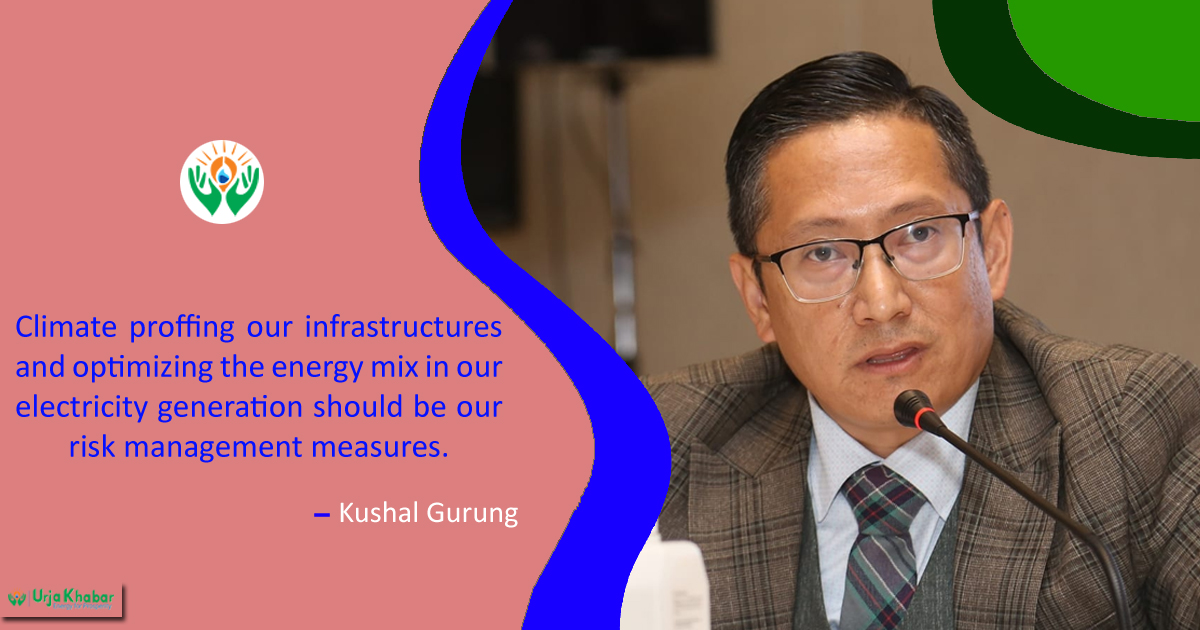Energy Update
“Contracts Relationships and Involvement in the Hydropower Project”

Prior to the creation of a Project and prior to the signing of a Contract with the successful tendering Contractor, an Employer must determine the desired outcome of the Project and make a series of decisions regarding the Project Tasks and Activities. What are the Responsibilities that the Employer will accept for himself and which will be delegated to others who are competent in tasks that he is not?
The Employer and its designated Engineer must undertake a considerable amount of work to determine the Project's feasibility. Subsequently, the engineering design must be completed, all necessary powers and legal entitlements must be acquired, and the necessary Contract documents must be established. All parties involved in the Project are aware that the parties' intentions are considered to be reflected in the contractual documents, however, some of those intentions are expressed explicitly while others are implicit. Both types of intentions must be acknowledged. As long as both parties to the Contract (in addition to the Engineer, Sub-contractors and Suppliers) comply with the contractual documents, all is well. The trouble begins when one of the above-mentioned parties behaves improperly and does not comply with the contract. To comprehend the expectations of those involved in the Project, it is necessary to consider their involvement in detail.

There should be no doubt as to who the Employer actually is in that he is named and his address given in. He can be changed during the life of the Contract but if the Employer wishes to assign the Contract, this can only be done with the Contractor's consent. There are various tasks the Employer is obliged to do so. He has to develop the concept of the Project, examine its feasibility and financial viability and prepare a cost plan. He must have determination, authority, finance and energy to be able to proceed, and not only to design and build, but also to occupy, operate, maintain and support the Project throughout its life cycle. It is also important that he obtains, or is already in possession of, adequate technical and commercial resources to fulfil the purpose of the entire Project.
He must have the necessary legal and administrative backing to obtain all the necessary procedures and processes from the relevant government line agencies for the construction, operation and maintenance of the Project, as well as its eventual renewal or disposal. Furthermore, he must be able to secure sufficient raw material supplies, labour, personnel, communication and markets, as well as the disposal of any waste product specified in the documentation. Furthermore, if he undertakes to assist the Contractor in the import and export of the required parts or plant, he must ensure that he is capable of doing so. Finally, he must have a design brief in place and appoint a design team to develop the Size, Shape, Location and Functional Requirements of the Project, followed by the preparation of positive plans for the procurement, construction and operation.

A supervising Engineer must also be appointed during the construction phase, whether it be the head of the initial design team or another competent Engineer. This competent Engineer, appointed in the contract, will work together with the employer to determine the terms and conditions of the contract to be applied, the prequalification stage of the selection process of the contractor, and the tender/bid documents to be utilized. The appointment of the supervising Engineer is done in a separate contract with the employer. The details are not communicated to the contractor, but the employer is required to communicate any matters for which approval is required prior to their implementation by the engineer.
Many of the details to be considered will include giving a definition of the language of the Contract, the currency to be used, rates of exchange, financial plans, bonds to be required, (bid bonds, advance payment bank guarantees and the performance bonds) insurances, rewards & penalties or liquidated damages, timing for completion or sectional completion (including a programme for pre-qualification, tendering and appointment of the Contractor), plant and material supply and dates of delivery, nomination of Suppliers and specialist Sub-Contractors. The Employer is also responsible for the provision of facilities, the definition and availability of the Site for the Works, Access to the Site, and for relations with other affected parties. He must also define the Taking over of Works, the Defects Liability Period, the condition for commissioning, testing and putting into operation of the Works, and many other matters.
Moreover, the Employer must ensure that adequate funds are allocated and usefully spent on the preliminary studies, site investigations, soil surveys, precise surveys, acquisition of land for the Works and Temporary Works. The budget for construction and commissioning and testing must also be adequate. A proper cash flow forecast by the Employer is vital as the lack of provision for advance and mobilization payments has jeopardized many projects in the past. A particularly important decision to be made by the Employer is how to deal with Insurances? Either, it is the responsibility of the Contractor or an Employer. The Employer has the option of handling Insurances himself where a number of separate Contractors are employed on a single project or where a phased Take-Over is involved. A vital matter often neglected is the security and provision of essential and confidential records and classified documents, many of which have to be maintained for ten, twenty, thirty years or more. The Employer should determine the policy, procedures and practice to be adopted for the safe keeping of all site records.
A decision must be made about which form of Contract is to be used. In Nepal, the most used book is also the FIDIC in construction industry. FIDIC Contracts have been developed over 50 years as the international standard for the Consulting Industry. The International Federation of Consulting Engineers (commonly known as FIDIC, acronym for its French name Fédération Internationale Des Ingénieurs-Conseils) is an international standards organization for construction technology and consulting engineering. They are recognized and used globally in many jurisdictions, on all types of projects.
In the case of civil engineering work that is to be measured on the basis of a Bill of Quantity, the standard FIDIC form will be the "Red Book". For electrical and mechanical work, the "Yellow Book" will be appropriate. For turnkey or EPC work, the "Silver Book" will be the appropriate form. If a private developer is involved in infrastructure development, they will modify the form accordingly to protect their businesses. Therefore, each FIDIC contract contains instructions on how to prepare Particular Conditions and examples of areas where specific provisions may be necessary for a particular project.
There are lots of times when the engineer needs to talk to the employer and the contractor, and there's only one time when the employer talks to the contractor about a settlement. The employer is the more important party to the contract because it's their project and their money that pays the engineer and the contractor. In the project context, the engineer isn't a party to the contract between the employer and contractor. He's named in the contract and has a lot of tasks and responsibilities that need his technical know-how and project management skills. The engineer has a separate contract between him and the employer that covers all the work they need to do for the employer. This could include feasibility studies, designing the works, preparing the tender/bid documents, overseeing the works, overseeing the erection, testing, and commissioning of the works, supervising the operation of the works, training of staff, preparing maintenance and operating manuals etc.
In the pre-contract phase, the Engineer is involved in a variety of activities required for the issuance of the Contract documents. While some of these activities are related to the design and technical aspects of the project, others are related to obtaining competitive bids/tenders from the chosen Contractors. Examples of these activities include collaborating with the employer to create a design brief, researching and identifying all the resources required to complete the overall Project, assessing the financial risks associated with the project, particularly those that are unexpected or unusual, and developing realistic financial and operating plans. Initially, the Engineer ensures that the employer accepts the decisions and actions that need to be taken by him to meet the programme's target dates, and most importantly to ensure that sufficient funds are available to issue the engineer's Certificate of Payment as prescribed by the Contract.
The Employer must ensure that the acquisition of the Site, its availability, and the means of access to the Site have been arranged, and that all planning permissions have been received. This will enable the Engineer to plan a time-frame to be used as the basis for the Contract. Additionally, the Engineer must be aware of a suitable commencement date and whether the employer wishes the work to be carried out in sections or in its entirety. These details will be outlined in the Terms of Contract. Furthermore, the Engineer must provide a detailed design for the Works themselves, as well as any Temporary Works undertaken by the Engineer. The Engineer must also provide clear working drawings, technical specifications, and Bills of Quantity, which all require detailed preparation. Finally, the Engineer and the Employer must agree on all other essential details. The time schedule for all of this must be agreed upon.
It would be a good idea for the Engineer to let the Employer and their staff know what the Engineer's role is under the Contractual Terms and how important it is for the Contractor to be treated fairly by the Employer and the Contractor. The Engineer should make sure everyone gets the same information and has the same chance to come to the Site and look at all the info related to the Works. He should also make sure the Tenders / Bids are received, secured and opened at the time set.
Once the tenders/bids have been opened, the Engineer has to look at each one thoroughly, fix any mistakes, check the method statement and programme (if submitted with the tender/bidder) and look out for any qualifications that might affect the Contractor’s bid. The Engineer has to make sure that the multiple Tender/bid amounts are all on the same terms for each tenderer/bidder, so they can compare them and make a shortlist for the employer to look at. The Engineer also has to check the contractors’ statements about their resources and experience in the low range of tenders/bidders to make sure the successful one is able to carry out the works and is financially able to do them. The last thing the Engineer has to do is write a report to the employer setting out the pros and cons of the different bids and recommending the most suitable one for the employer. The employer, however, has to make their own decision.
When the formalities of appointing the successful Tenderer/Bidder are completed and the Works commenced, the Engineer has certain matters to attend to. Both he and his Representative should keep diaries of their involvement with the Contract. The records should include essential information that may need to be referred to in the future. The Engineer's Representative should document all matters of site importance on a daily basis, including weather conditions, progress and the contractor's plant and workforce on site, regardless of whether they are working or not. Provision of progress photographs would enhance the standard of recordkeeping. These photographs should be taken at predetermined intervals and on specific occasions, such as after stormy weather, earthquake, flood or strike. Regular site meetings should be held and the preparation and approval of the minutes of these meetings should follow immediately, preferably the following day.
The Engineer should visit the Site on a regular basis to be kept fully informed of the progress of the work. This provides an opportunity for both the Engineer and his Representative to consult with him on any matters relevant to the Contract. Experience has shown that, more than any other individual involved in the Project, the Engineer can provide the Employer with the assurance that the Works will be completed on time, of the appropriate standard, and that the Contractor will receive a fair and equitable remuneration for the work completed.
Before considering tendering/bidding for works worldwide, a Contractor must ensure that they can provide the necessary resources to carry out and complete the works relevant to a prospective Employer’s Project. Additionally, they must have sufficient financial resources to ensure that they can wait for the final settlement and payment of the full Contract Price as they know they must. They require a great deal of endurance and confidence in their own capabilities as well as in the capabilities of their supporters. They must be able to provide finance, the capacity to trade internationally and nationally, personnel with the required technical, commercial, and management skills, skilled workers and supervisors, raw materials, plant, and equipment, as well as a wealth of knowledge from all parties involved.
Although the Contractor may not possess all of these resources within their own organizations, they must be aware of how, where, and when they can obtain the resources, they do not possess. One of the most critical aspects for a Contractor to consider is the possibility that the money spent on tendering and bidding for the Project may never be recouped if the Contract is not secured. The costs and wasted effort associated with this can be significant. The Contractor must have the ability to price work in a competitive manner, but without reducing the price too much or making false economies in order to win the contract.
If the Contractor makes too many price reductions in the tendering process, he may be able to secure the Contract at the expense of leaving too much of a margin of difference with the next highest tenderer. Having a reasonable position in the industry is also advantageous in order to obtain the bonds required and to purchase the Insurances at reasonable rates. Furthermore, the Contractor must acknowledge that, by submitting a tender/bid for the works of the Project, he warrants the physical construction of the Works by his organization.
Once the Contract has been secured, it is the Contractor's responsibility to carry out the construction of the works with the utmost care, diligence and promptness, to supply all necessary items for these purposes, and to ensure the stability and security of all Site activities. There may be certain exceptions to this obligation, but these must be explicitly mentioned in the Contract documentation.
It is essential to understand that the Contractor must complete the Contract in a timely manner, subject to any modifications permitted under the Contract and to fulfil all its obligations in the manner that the Contractor expects of the Employer. The Contractor must adhere to all the procedures set out in the Terms of Contract and, during the construction, carry out the instructions given by the Engineer, and ensure that all notices are given and received by the Contractor at the appropriate time and to the appropriate addresses. Most importantly, the Contractor must comply with the requirements set out in the Contract, the applicable law of the country where the Project is located, and the laws and regulations of the country by which the Contractor operates.
Mr. Pokhrel is Professional Engineer and Project & Contract Management Expert and associate with Golyan Group
Reference:
• Contracts for Sustainable Infrastructure: Ensuring the economic, social and environmental co-benefits of infrastructure investment projects | International Institute for Sustainable Development (iisd.org)
• What impedes Nepal's infrastructure governance? - Nepal Live Today Nepal Live Today
• Contractual relationships in a concession | Download Scientific Diagram (researchgate.net)
• (PDF) Elements of Relational Contract in the Delivery of Public Infrastructure in Malaysia (researchgate.net)
• ACKNOWLEDGEMENTS (oecd.org)
• WP-2006_2.pdf (oecd.org)
• Full article: Implementing relational contracting in a public client organization: the influence of policy clashes, resources and project autonomy (tandfonline.com)
• A Best Practice of ISO 55000: Value-based Decision Making (copperleaf.com)
• Various Approaches to Early Contractor Involvement in Relational Contracts - ScienceDirect
• Case-study-on-Delivery-Management-of-Infrastructure-Projects-in-the-Public-Sector-1.pdf (gtac.gov.za)
• Risks, Contracts, and Private-Sector Participation in Infrastructure | Journal of Construction Engineering and Management | Vol 137, No 11 (ascelibrary.org)
• Buildings | Free Full-Text | A Conceptual Model for Selecting Early Contractor Involvement (ECI) for a Project (mdpi.com)
Conversation
- Info. Dept. Reg. No. : 254/073/74
- Telephone : +977-1-5321303
- Email : [email protected]














